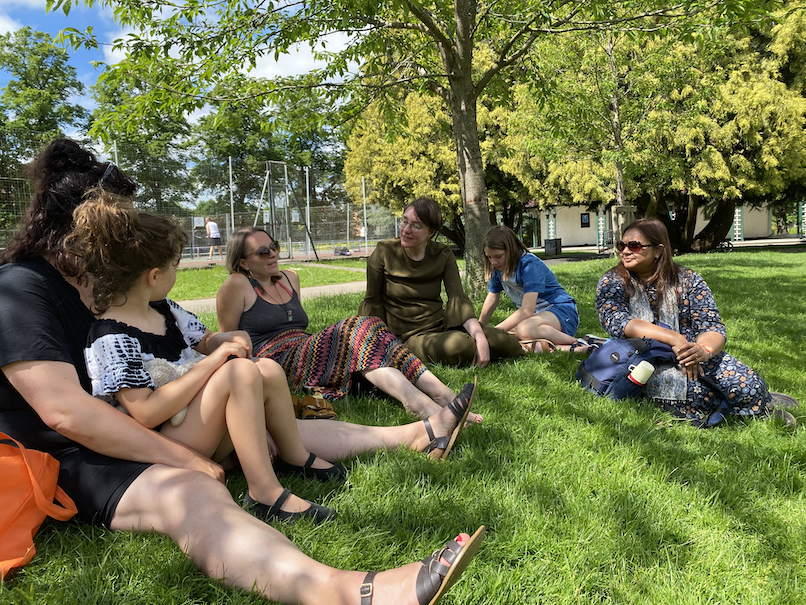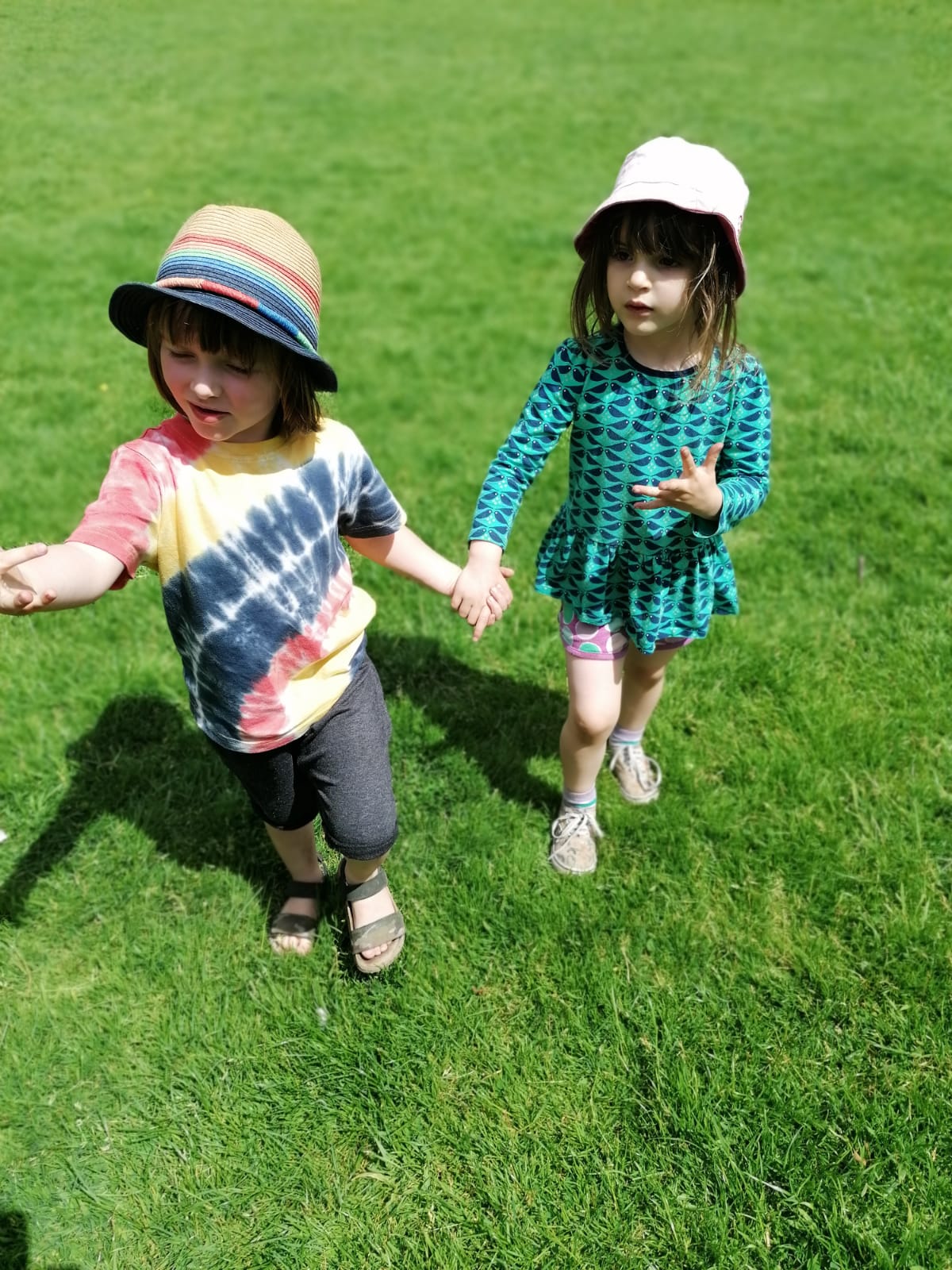Adele Reed, 3 August 2021
What does the future of Coventry sound like? Artist Adele Reed reports on the first meet-up of the project, “Small Folk Found Sounds,”part of the Warwick Institute of Engagement-funded Sampling Sounds of Coventry’s Future.
On the morning of Sunday 13th June, five mothers and children met at Spencer Park in Coventry to begin a collaborative work between each-other and their small folk. In attendance were project leader Adele Mary Reed, Warwick University academic Noortje Marres, who is part of the team of researchers posing the question “What does the future of Coventry sound like?” and Coventry based parents and creatives Geeta Sarcar, Rachel Lumsden and Claire Coughlin. However, even more central to the project are the young folk: from youngest to eldest Bodhi aged 3, Kitty aged 3.5, Rubin aged 4, Violet aged 5 and also helping to facilitate today Audra aged 11. Rather serendipitously, Jay Vincent and Eole aged 2.5 and the new youngest of the small crew, joined the project towards the end of the meet up as they happened to be in the park at the same time and are super enthusiastic about its themes. Jay has joyously called the task in hand ‘sound busting’.

Firstly we sat talking. The adults reflected on our creative practices and interests, certain noises harsh and gentle and the subsequent responses, that are regular parts of our children’s lives and sensory registers, but perhaps most importantly: how welcome we felt with our children at arts events. Part of the inspiration behind ‘Found Sounds with Small Folks’ was to disrupt the typical “art project” or “artist commission” status-quo. In thinking about the future of the city, through the lens of cerebral concept-driven proposals, where were the future folk at, the literal future of our local humanity? This project seeks to ask the young ones themselves the very question – what does your city sound like? What do you want it to sound like? What might we hear next? How do we experience that, dream for it, like or dislike it?
A participant kindly shared her notes on the day: “Rachel described her daughter hearing birds in the morning, and then ticking on the metal bed to play with this sound. Claire mentions car alarms and the anxiety they sometimes invoke for her son, which they deal with by making sounds along with the car alarm, which makes it less awful. Geeta mentioned the awful saying that children should only be seen and not heard, saying that she lives in a boisterous, loud household and that is a conscious decision.”
Following our conversation the children were encouraged by their parent to respond to certain prompts, each child picking a prompt from a hat. The prompts were designed to introduce ways in which to perceive sounds in a given environment, ahead of participants carrying out self-directed exercises away from the meeting, in their own relaxed time without too many distractions. These were the practise prompts we offered:

Bodhi responded to: How many noises can we hear all at once?
Kitty answered: What is the loudest noise in the park?
Rubin thought about: What do we hear when we get really close to something?
Violet: Does the park sound different at different times of the year?
Here is an example of one of the responses.
Noortje reflected: “The university is envisioning the future through new technologies like cars and scooters, but this is done from the university campus: what does the future look like from the standpoint of living in the city? Using sound as a way of working through perception. Children have an ability to perceive and detect, an openness that we lose as adults, let’s listen with them and perhaps we can regain some of this capacity?”
In addition to the practice prompts we also decided which parent + child team would head where during the summer to collect sounds and make marks for an added visual element. It was interesting to consider viewpoints from different ages of early years folk, different genders and backgrounds, and also to situate them in their own area of the city for reflection and pondering. Bodhi chose the train station, Eole the busy area of Foleshill and the park, Kitty the domestic home environment, Rubin the local woods and Violet the city centre. It was felt that this would generate a rich cacophony of ideas and attempt to encompass the varied aspects of a city. Coventry is a place of contrasts and surprises, of quiet natural beauty as well as high levels of traffic and pollution. How does a child receive the city’s infrastructure and its wildlife and how do they envisage their sense of self amongst it, especially as they imagine the future?



We are hoping to encourage an active listening in young children, broadening their horizons of the expansive world of sound and their sensory awarenesses and attention in general but not only for the child’s benefits, for an adult audience’s. Who gets to decide what belongs in galleries? Research projects and cross-discipline thinking groups like Warwick’s Centre for Interdisciplinary Methodologies who commission this project should invest in novel modes of thought, should disrupt the typical systems. Perhaps the kids respond with surreality, with play, with performance and in turn we learn ways in which to consider afresh as adults. The collected small folk findings will take on a form centre stage, tearing the envelope open on the conventions of ‘art’, assembling within an original audio composition formulated by Adele for a performance at Just Dropped In in October alongside the other commissioned works within the wider project.